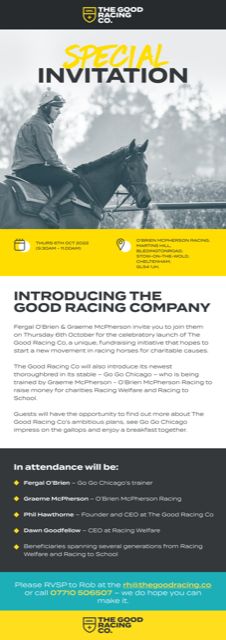The Breeder’s Cup Race stands as a monumental event in the equestrian world, where top-quality thoroughbreds come face to face in a contest of speed, agility, and endurance. But behind every horse that gallops with grace and power on that racetrack is a journey of rigorous conditioning. This is not just about a race; it’s about preparation, dedication, and the science of equine fitness. As we gear up for the Santa Anita Park race this week, let’s take a deep dive into what it takes to condition the horses behind the race.
1. The Foundation: Basic Conditioning
Long before the Breeder’s Cup emerges on the horizon, or even before Breeders’ Cup betting sites begin their predictions, trainers initiate the crucial step of laying down an unwavering foundation of basic conditioning. This stage is about patience and consistency. Imagine it as the horse’s equivalent of a human’s gentle jogging or a leisurely bike ride.
These prolonged, unhurried gallops are not merely exercises in motion. They serve the dual purpose of building impressive stamina and fostering cardiovascular strength, all while priming the horse’s musculoskeletal system, ensuring it’s ready and resilient for the far more demanding workouts ahead.
2. Intervals and Speed Works
With a solid foundation in place, the next step beckons: the introduction of interval training, often dubbed by many in the industry as ‘breeze’ workouts. Drawing parallels with training regimes of elite human athletes, horses, too, derive immense benefits from these exercises.
They engage in exhilarating, short bursts of high-speed runs, only to be followed by a much-needed resting period. The brilliance of this approach lies not just in enhancing cardiovascular prowess; it plays a pivotal role in training their bodies to rejuvenate rapidly post sprints – a skill that becomes indispensable when facing intense competition on race day.
3. Hill Training
While gravity might be a ubiquitous challenge faced by all terrestrial beings, its impact on training regimes is notably varied. Horses, in their majestic might, extract significant advantages from hill training. As they ascend, the uphill battle serves to fortify their hindquarters, simultaneously amplifying their aerobic capacity.
Conversely, descending these slopes sharpens their sense of balance and refines their agility. Beyond mere muscular strength, this training phase imbues the horse with the experience and confidence to navigate diverse terrains, ensuring they’re always a step ahead.
4. Swimming and Cross-training
The equestrian training landscape is witnessing a transformative shift, with more trainers now veering towards unconventional methods that promise enhanced results. Swimming has risen to prominence in this new age of horse conditioning.
Far from being just another workout, it provides horses with a comprehensive full-body engagement, minus the jarring impacts inherent to galloping. This not only minimizes the potential for injuries but also serves as a therapeutic exercise. Post-swim, horses often exhibit increased flexibility and an expanded range of motion, ensuring they remain at the peak of their physical prowess, ready for any challenge.
5. Diet and Nutrition
Training alone won’t get a horse to the Breeder’s Cup; their diet plays a very critical role in preparation. These equine athletes require a meticulously balanced intake of proteins, fats, and carbohydrates to sustain their rigorous training schedules.
As the demands of their physical exertions mount, the importance of maintaining a perfect electrolyte balance becomes even more pronounced. Ensuring they consistently receive the right blend of vitamins and minerals doesn’t just give them the necessary energy for their workouts but is integral to their post-exercise recovery and the vital development of muscles.
6. Mental Conditioning
A race isn’t solely a physical challenge; it’s profoundly mental, too. Horses, mirroring human athletes in many ways, can grapple with a range of emotions, from anxiety and over-excitement to a debilitating lack of focus. Trainers, understanding this intricate psyche, work assiduously with their charges to instill a deep-rooted sense of calm.
This comprehensive mental training involves gradually exposing them to varied environments — everything from the cacophonous roars of an enthusiastic crowd to the unique tactile sensations of diverse tracks. The ultimate goal? To craft a horse that boasts a mind as resilient and focused as its powerful physique.
7. Recovery and Rest
Equally paramount to the exhaustive training is the essence of rest. After the rigors of intense workouts, horses need a substantial duration to let their muscles rejuvenate and grow. This recovery isn’t just about giving them a few days off.
The process is comprehensive, incorporating therapeutic massages, specialized physiotherapy, and even avant-garde techniques like cold-water therapy. With evolving equine science, today’s trainers are armed with an extensive array of tools, ensuring their charges not only recover but thrive, always ready to deliver their best.
8. Team Effort
Behind every horse that gallops its way to the Breeder’s Cup glory is a legion of dedicated professionals. This journey isn’t merely about the trainer’s strategy or the jockey’s skills. The entire operation sees veterinarians, nutritionists, physiotherapists, and even sports psychologists playing indispensable roles.
It’s truly a collaborative endeavor, with every expert pouring their specialized knowledge and passion into preparing the horse for the big day.
The Road to The Cup
While the Breeder’s Cup is a spectacle for all of us, for those involved, it’s the culmination of months, if not years, of dedication. The glint of sweat on a horse’s flank, the determined look in a jockey’s eye, and the hopeful glance of a trainer are not just about that moment. They tell a story of early mornings, rigorous workouts, challenges overcome, and a shared dream.
As spectators, we see the result of this meticulous preparation during a few exhilarating minutes on the racetrack. But by understanding the depth of effort and the science behind it, our appreciation for these equine athletes and their human counterparts grows manifold.
In summary, conditioning for the Breeder’s Cup isn’t just about speed. It’s a holistic approach that combines physical prowess with mental tenacity, supported by a team that leaves no stone unturned in their quest for glory. As the next race approaches, remember the journey, not just the finish line. It truly exemplifies what it takes to be at the pinnacle of equestrian sport.
















